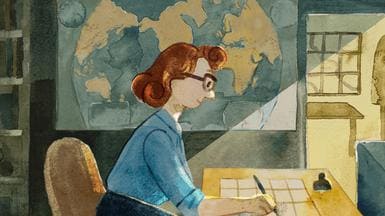Google Celebrates The Life Of American Geologist Marie Tharp With Creative Doodle

Today’s Google Doodle celebrates the life of Marie Tharp, an American geologist and oceanographic cartographer. She helped prove the theories of continental drift. On November 21, 1998, the Library of Congress named her one of the greatest cartographers of the 20th century and Google wanted to celebrate this feat of the geologist.
Today’s Google Doodle features an interactive exploration of Tharp’s life. Caitlyn Larsen, Rebecca Nesel, and Dr Tiara Moore narrate her story. These notable women are living out Tharp’s legacy by making strides in the traditionally male-dominated ocean science and geology spaces.
Marie Tharp was an only child born on July 30, 1920, in Ypsilanti, Michigan. Tharp’s father, who worked for the US Department of Agriculture, introduced her to mapmaking early. She attended the University of Michigan for her master’s degree in petroleum geology— this was particularly impressive given so few women worked in science during this period. She moved to New York City in 1948 and became the first woman to work at the Lamont Geological Observatory where she met geologist Bruce Heezen.
Heezen gathered ocean-depth data in the Atlantic Ocean, which Tharp used to create maps of the mysterious ocean floor. New findings from echo sounders (sonars used to find water depth) helped her discover the Mid-Atlantic Ridge. She brought these findings to Heezen, who infamously dismissed this as “girl talk”. However, when they compared these V-shaped rifts with earthquake epicentre maps, Heezen could not ignore the facts
In 1957, Tharp and Heezen co-published the first map of the ocean floor in the North Atlantic. Twenty years later, National Geographic published the first world map of the entire ocean floor penned by Tharp and Heezen, titled “The World Ocean Floor.” Later, Tharp donated her entire map collection to the Library of Congress in 1995.
Credits: India Today






